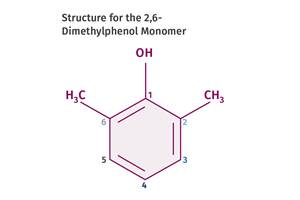Expect Graphene to Make its Mark in Multiple Markets
There has been a lot of buzz about graphene in recent times and for good reason. A material stronger and stiffer than carbon fiber, graphene is thought to have enormous commercial potential, but has been impractical to use on a large scale, with researchers limited to using small flakes of the material.

There has been a lot of buzz about graphene in recent times and for good reason. A material stronger and stiffer than carbon fiber, graphene is thought to have enormous commercial potential, but has been impractical to use on a large scale, with researchers limited to using small flakes of the material. Graphene has been making some major progress, however. In the form of oxides or nanoplatelets, graphene is in a better position to fulfill market needs, as it is a durable, stretchable and lightweight material. Here are some examples of the ‘buzz’ I gathered (we’d love to hear from you for more on this):
• PT’s sister publication Composites World reported on May 18, that through use of a new chemical vapor deposition method, a team of researchers at the Department of Energy’s Oak Ridge National Laboratory (ORNL), Oak Ridge, Tenn., have fabricated polymer composites containing 51-mm by 51-mm (2.01-in. by 2.01-in) sheets of the one-atom thick hexagonally arranged carbon atoms.
The ORNL team is led by Ivan Vlassiouk, who noted that up until their recent work, the superb mechanical properties of graphene had been shown only at a micro scale. “We have extended this to a larger scale, which considerably extends the potential applications and market for graphene…..In our case, we were able to use chemical vapor deposition to make a nanocomposite laminate that is electrically conductive with graphene loading that is 50 times less compared to current state-of-the-art samples. This is a key to making the material competitive in the market.”
The team’s use of the larger sheets of graphene versus the use of tiny flakes of graphene or other carbon nanomaterials as are traditionally used for polymer nanocomposite construction, eliminates the flake dispersion and agglomeration problems and allows the material to better conduct electricity with less actual graphene in the polymer. If the ORNL team can reduce the cost and demonstrate scalability, researchers envision graphene being used in: aerospace (structural monitoring, flame retardants, anti-icing, conductive); automotive (catalysts, wear-resistant coatings); and, structural applications (self-cleaning coatings, temperature control materials). Other areas include: electronics (displays, printed electronics, thermal management); energy (photovoltaics, filtration, energy storage); and, manufacturing (catalysts, barrier coatings, filtration.
• The new Frost & Sullivan study, “Impact Assessment of Graphene in Key Sectors” expects market revenues to reach $149.1 million by 2020. One of the prime markets for graphene has been the energy sector and it will remain so for the next three years, according to technical insights research analyst Sanchari Chatterjee. “Lithium storage and catalytic system substrates are some of the most demanding application areas of graphene. However, other applications such as energy storage for batteries and capacitors have also been identified.
In the electronics sector, graphene is replacing materials like indium tin oxide. While graphene is widely used in flexible electronics, it can further penetrate this sector for the production of minute electronic components and optoelectronics. Moreover, according to this analysis, the adoption of graphene in the electronics and composites sector will increase within the next three to five years, while during the same time, new markets such as healthcare and personal care are expected to open up for graphene.
The absence of large-scale graphene production in a cost-effective and reproducible manner has made commercialization a challenge but Chatterjee says, “Manufacturers are designing several economical and large-scale production processes to ensure that high-quality graphene can be produced within a short time. This can significantly reduce commercialization challenges.”
Although graphene is among the thinnest yet strongest materials in the world, its structural design creates flaws when made into sheets for use in energy applications. This compromises performance, Further, the zero band gap of graphene is a major technical drawback as it limits the achievable on-off current ratios, notes Chatterjee.
With the reliability of standalone graphene in doubt, there is ongoing research to customize graphene to enable manufacturers to use it in its reinforced and hybrid forms. Overall, corrective R&D and innovative commercialization techniques can help realize the tremendous potential of graphene that ranges from applications in biomedical to anti-corrosion coatings, according to this analysis.
• As reported in a February 19 blog, among the ‘starring’ companies that were a part of the NPE2015 Startup Garage, a partnership of SPI and new-venture tracking firm Startup.Directory, was Garmor Inc., Orlando, Fla. The company’s focus: graphene priced for high-volume plastics applications. At NPE2015, Garmor displayed samples of its low-cost graphene oxide and reduced graphene oxide as well as products made with graphene oxide polymer and fiberglass composites. Such composites can be used in applications ranging from automotive, aerospace, and military to consumer electronics, medical, and construction.
Although initial work has been with epoxy-based and other thermoset composites, the company has data on its work with graphene-reinforced thermoplastics such as HDPE and PC, and is actively seeking interested companies in the thermoplastic arena to further its development. Polymers enhanced with Garmor’s graphene oxide reportedly show a dramatic increase in mechanical and electrical performance. Garmor’s partnership with the University of Central Florida (UCF), have played an integral role in perfecting a method to optimize the incorporation of graphene in various polymer, composite materials and coatings, according to v.p. of engineering Sean Christiansen.
Garmor’s biggest feat is its ability to manufacture low-cost graphene oxide in large volumes. This ‘green’ and novel manufacturing technology was developed at UCF by Richard Blair, a researcher in the College of Sciences and the Center for Advanced Turbine and Energy Research, and subsequently licensed to Garmor for further enhancement. The end result is said to be a simple but effective method of producing edge-functionalized graphene oxide with only water as a by-product; essentially, a ‘green’ additive suitable for large-scale production at commodity type prices. Garmor has focused on testing the use of graphene in downstream products to facilitate product acceptance. Essentially, it has been devising ‘simple’ recipes that potential customers can use to produce advanced graphene-based materials, according to Christiansen.
• Meanwhile, though unrelated to plastic composites, what may possibly be the first commercially viable product to use the super-strong carbon—a light bulb--is slated to go on sale later this year. Designed at UK’s Manchester University, where the material was discovered ***, the dimmable bulb contains a filament-shaped LED coated in graphene and is said to cut energy use by 10% and last longer owing to its conductivity.
The light bulb was developed by a Canadian-financed company, Graphene Lighting, with one of its directors being Professor Colin Bailey, deputy vice-chancellor at the University of Manchester. The light bulb is expected to be priced lower than some LED bulbs. Based on traditional light bulb design, the use of graphene allows it to conduct electricity and heat more effectively.
Also important to note: Earlier this year, the UK government made a $59-million investment in opening the ‘National Graphene Institute in Manchester’, via its Engineering and Physical Sciences Research Council, with an additional $36-million provided by the European Regional Development Fund. Chancellor George Osborn, who opened the site on March 20, said he hoped the UK can set off competition from China and South Korea to become the center of excellence in graphene technology. More than 35 countries have already partnered with the university to develop projects. The race is now on to develop other practical and commercial uses, including lighter but more robust car and aircraft frames and false teeth. The material has also been incorporated into products such as tennis rackets and skis.
*** The discovery of graphene in 2004 by Andre Geim and Konstantin Novoselov, two Russian-born scientists at the University of Manchester, earned the pair the Nobel Prize for Physics and knighthoods. A micro-thin layer of graphene is stronger than steel and it has been dubbed a “wonder material” because of its potential use.
Want to find or compare materials data for different resins, grades, or suppliers? Check out Plastics Technology’s Plaspec Global materials database.

Related Content
Volume Resin Prices Move in Different Directions
PE, PP, PVC, and ABS prices slump, while PS, PET, PC, and nylons 6 and 66 prices rise.
Read MoreHow Do You Like Your Acetal: Homopolymer or Copolymer?
Acetal materials have been a commercial option for more than 50 years.
Read MorePrices of Volume Resins Drop
Price relief is expected to continue through the fourth quarter for nine major commodity and engineering resins, driven by widespread supply/demand imbalances.
Read MoreTracing the History of Polymeric Materials: Polyphenylene Oxide
Behind the scenes of the discovery of PPO.
Read MoreRead Next
Troubleshooting Screw and Barrel Wear in Extrusion
Extruder screws and barrels will wear over time. If you are seeing a reduction in specific rate and higher discharge temperatures, wear is the likely culprit.
Read MoreProcessor Turns to AI to Help Keep Machines Humming
At captive processor McConkey, a new generation of artificial intelligence models, highlighted by ChatGPT, is helping it wade through the shortage of skilled labor and keep its production lines churning out good parts.
Read More


















.png;maxWidth=300;quality=90)









